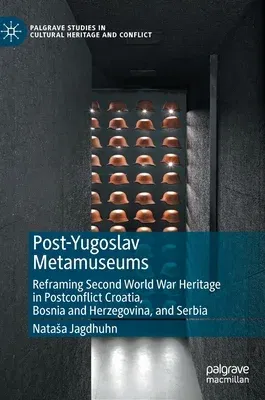Natasa Jagdhuhn
(Author)Post-Yugoslav Metamuseums: Reframing Second World War Heritage in Postconflict Croatia, Bosnia and Herzegovina, and Serbia (2022)Hardcover - 2022, 21 September 2022

Qty
1
Turbo
Ships in 2 - 3 days
In Stock
Free Delivery
Cash on Delivery
15 Days
Free Returns
Secure Checkout

Part of Series
Palgrave Studies in Cultural Heritage and Conflict
Print Length
259 pages
Language
English
Publisher
Palgrave MacMillan
Date Published
21 Sep 2022
ISBN-10
3031102274
ISBN-13
9783031102271
Description
Product Details
Author:
Book Edition:
2022
Book Format:
Hardcover
Country of Origin:
NL
Date Published:
21 September 2022
Dimensions:
21.01 x
14.81 x
1.75 cm
ISBN-10:
3031102274
ISBN-13:
9783031102271
Language:
English
Location:
Cham
Pages:
259
Publisher:
Weight:
480.81 gm